Can Dogs Eat Edamame Beans? Vet Explains Benefits, Risks & Safe Serving
- 14 Apr 2025 10:58
As loving pet owners, we often share our lives and sometimes our snacks with our furry companions. Edamame, those green, often salted soybean pods served in Japanese restaurants or found in freezer aisles, have gained popularity as a healthy human snack. Packed with protein and fiber, you might wonder, while popping a bean into your mouth, "can dogs eat edamame beans?" The answer is generally **yes**, the beans themselves (removed from the pod) are safe and can even be beneficial for dogs when served plain and in moderation. However, the pods present serious risks, and preparation methods are crucial for safety.
This comprehensive guide, grounded in veterinary nutritional science and adhering to E-E-A-T (Expertise, Authoritativeness, Trustworthiness) principles, will explore the suitability of edamame beans for dogs. We'll delve into their nutritional benefits, the significant dangers posed by the pods and improper preparation, considerations about soy, and how to offer these green beans safely to your canine friend.
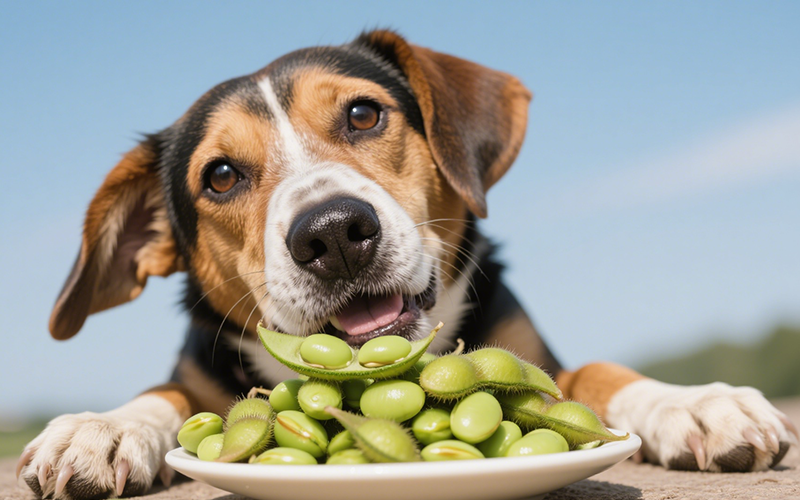
What Exactly is Edamame?
Edamame refers to immature soybeans harvested while they are still green and tender, typically still in their pods. They belong to the legume family and are the same species as mature soybeans (Glycine max) used to make tofu, soy milk, and soy sauce, but picked at an earlier stage.
Key points to understand:
The Bean:** The soft, green bean inside the pod is the edible part typically considered safe for dogs (when plain and cooked).
The Pod:** The tough, fibrous outer shell (pod) is **NOT** safe for dogs and poses significant risks.
Preparation:** Humans often boil or steam edamame pods in salted water and eat the beans by squeezing them out of the pod. They are also sold shelled (beans only), both fresh and frozen.
The distinction between the bean and the pod is critical when discussing if edamame is safe for dogs.
Is Edamame Generally Safe for Dogs? The Nuanced Answer
Yes, the **plain, cooked edamame beans** (shelled) are generally considered safe for dogs as an occasional treat or supplement when fed in moderation. They are not inherently toxic like grapes or chocolate.
However, crucial caveats apply:
AVOID THE PODS: Edamame pods are indigestible and a major choking and obstruction hazard.
PLAIN ONLY: Edamame prepared for humans often contains excessive salt, oils, garlic, or spices that are harmful to dogs. Only plain beans are suitable.
COOKED IS BEST: While raw beans aren't toxic, cooking improves digestibility.
MODERATION: Due to fiber content and potential soy sensitivities, edamame should be a treat, not a staple.
SOY CONSIDERATIONS: Soy is a common allergen for some dogs, and concerns exist regarding phytoestrogens (discussed later).
So, while the beans are okay under specific conditions, context and preparation are everything.
Nutritional Benefits of Plain Edamame Beans for Dogs
When served appropriately (plain, cooked, shelled, in moderation), edamame beans can offer several nutritional advantages:
Excellent Source of Plant-Based Protein: Provides essential amino acids crucial for muscle development, tissue repair, and overall bodily function.
Rich in Dietary Fiber: Supports healthy digestion, promotes regular bowel movements, helps feed beneficial gut bacteria, and can contribute to feelings of fullness, aiding weight management.
Good Source of Vitamins: Contains important vitamins like:
Folate (Vitamin B9): Essential for DNA synthesis, cell growth, and metabolic functions.
Vitamin K: Vital for proper blood clotting and bone health.
Vitamin C: An antioxidant supporting the immune system (though dogs produce their own).
Riboflavin (B2) & Thiamine (B1): Involved in energy metabolism.
Provides Essential Minerals: Offers minerals such as manganese (bone health, metabolism), phosphorus (bones, energy), potassium (nerve/muscle function), magnesium (enzyme function, nerve/muscle health), and iron (oxygen transport).
Contains Omega-3 Fatty Acids: Provides plant-based omega-3s (ALA), which have anti-inflammatory properties and support skin and coat health (though marine sources like fish oil are richer in the more readily usable EPA/DHA).
Low in Calories (Compared to Fatty Treats): Makes plain edamame beans a potentially healthier, lower-calorie treat option.
These benefits of edamame for dogs make plain, shelled beans an attractive treat, but the risks must be carefully managed.
Significant Risks and Concerns When Feeding Edamame
It's crucial to be aware of the potential dangers before offering edamame:
1. The Pods: Choking & Obstruction Hazard (MAJOR DANGER!)
This is the **most critical risk**. Edamame pods are extremely tough and fibrous.
Indigestible: Dogs cannot properly digest the pods.
Choking Hazard: If a dog tries to swallow a pod whole or in large pieces, it can easily become lodged in the throat or airway, causing choking – a life-threatening emergency.
Intestinal Obstruction: If swallowed, the tough pod material can cause a blockage in the stomach or intestines, preventing the passage of food and waste. This is extremely painful and requires emergency veterinary surgery.
NEVER allow your dog to eat edamame pods. Always serve only the beans inside.
2. Digestive Upset (Beans & Fiber)
Even the beans themselves can cause issues if fed improperly:
High Fiber: Introducing too much fiber too quickly can lead to gas, bloating, diarrhea, and stomach cramps.
Sudden Introduction: Any new food can cause digestive upset if not introduced gradually.
Solution: Start with only a few beans and monitor your dog's reaction.
3. Soy Allergies and Sensitivities
Soy is recognized as one of the more common food allergens in dogs, although allergies can develop to any protein.
Symptoms: Can include itchy skin (most common), chronic ear infections, paw licking, skin rashes, hives, facial swelling, vomiting, or diarrhea.
Action: If your dog has a known soy allergy, avoid edamame completely. If you suspect an allergy after feeding edamame, discontinue use and consult your vet. The risk of soy allergy in dogs is a valid reason for caution.
4. Harmful Preparations (Salt, Seasonings)
Edamame prepared for humans is often unsafe for dogs:
Excessive Salt: Steamed edamame pods are frequently heavily salted. High sodium intake is dangerous for dogs (can cause dehydration, vomiting, diarrhea, potential sodium ion poisoning).
Garlic, Onion Powder, Spicy Seasonings: Often added to seasoned edamame beans or pods. Garlic and onion are toxic, and spicy ingredients cause severe irritation.
Oils: Stir-fried edamame beans may contain excess oils, increasing fat content and pancreatitis risk.
Only **plain, unsalted, unseasoned** beans are safe.
5. Phytoestrogens (Minor Theoretical Concern)
Soybeans contain isoflavones, which are phytoestrogens (plant compounds that can mimic estrogen). Concerns are sometimes raised about their potential long-term effects on hormonal balance, especially in intact animals or those with certain health conditions. However, the small amounts present in occasional edamame treats are generally **not considered a significant risk** for most healthy dogs by mainstream veterinary nutritionists. It might be a factor to discuss with your vet for dogs with specific endocrine issues, but it's usually low on the list of concerns compared to pods or seasonings.
6. Potential GMO Factor
A large percentage of soybeans grown globally are genetically modified (GMO). While current scientific consensus finds approved GMO crops safe to eat, some owners prefer to avoid them. Organic edamame would be non-GMO if this is a concern for you.
Raw vs. Cooked Edamame Beans for Dogs
While raw edamame beans aren't strictly toxic, **cooked is generally recommended:**
Raw Beans: May contain enzyme inhibitors (like trypsin inhibitors) that can interfere slightly with protein digestion. Can be harder to digest, potentially leading to more gas. Texture is firmer.
Cooked Beans (Plain): Cooking deactivates most enzyme inhibitors and softens the beans, making them easier to digest and potentially reducing gas. Steaming or boiling plain beans is ideal.
Therefore, plain cooked edamame beans are the preferred form for dogs.
Safe Preparation: The ONLY Way to Offer Edamame Beans
If you choose to feed edamame beans, follow these steps meticulously:
Choose the Right Form: Use fresh or frozen **shelled** edamame beans OR whole pods from which you will *remove* the beans after cooking.
Cook Plain:**Crucially: Do NOT add ANY salt, oil, garlic, onion, spices, or seasonings.**
Steaming (Preferred): Steam shelled beans or whole pods until tender (usually 5-10 minutes).
Boiling: Boil shelled beans or whole pods in plain water until tender.
**SHELL THE BEANS:** If you cooked whole pods, carefully squeeze or pop the beans out of each pod. **DISCARD THE PODS SECURELY** where your dog cannot access them. This is the most critical safety step.
Cool Completely: Ensure the cooked beans are fully cooled before offering.
Serve Plain: Offer only the plain, cooked beans.
Introduce Slowly: Start with just 2-3 beans to test for tolerance and potential allergies.
Serving Size: How Much Edamame Can Dogs Eat Safely?
Moderation is key due to fiber content and potential soy sensitivity.
Treat Rule: Edamame beans should fall under the 10% rule – treats shouldn't exceed 10% of daily calories.
Frequency: Offer as an occasional treat (a few times a week at most), not a daily food item.
Quantity Guidelines (Plain, Cooked, Shelled Beans):**Adjust based on your dog's size, activity level, and digestive tolerance.
Toy/Small Dogs: 2-4 beans per serving.
Medium Dogs: 5-8 beans per serving.
Large Dogs: A small handful (approx. 8-12 beans) per serving.
Monitor Reaction: Watch for gas, bloating, loose stools, or signs of allergy. Reduce quantity or discontinue if issues arise.
Knowing how many edamame beans dogs can eat means keeping portions small and occasional.
Table: Edamame Safety & Alternatives
| Food Item | Safety Status for Dogs | Key Concerns / Notes |
| Plain Cooked Edamame BEANS (Shelled) | Safe (in strict moderation) | Fiber (GI upset risk), Soy Allergy potential. MUST be plain. |
| Edamame PODS | UNSAFE - DANGEROUS | Indigestible, Major Choking & Obstruction Hazard. |
| Salted/Seasoned Edamame (Beans or Pods) | UNSAFE - AVOID | High Sodium, potentially toxic seasonings (garlic/onion), oils. Pods always unsafe. |
| Green Beans (Plain) | Very Safe | Low calorie, high fiber, vitamins. Excellent edamame alternative. |
| Peas (Plain, Cooked) | Generally Safe (in moderation) | Contain purines (caution for dogs prone to urate stones). Higher sugar/starch than green beans. |
| Broccoli (Plain, Cooked, Chopped) | Safe (in strict moderation) | Isothiocyanates in florets (GI upset risk), stalks = choking risk if not chopped small. |
Signs of Trouble: When to Call the Vet After Edamame Ingestion
Contact your veterinarian immediately if:
You suspect your dog ate **edamame PODS** (risk of obstruction).
Your dog ate edamame prepared with salt, garlic, onion, or other harmful ingredients.
Your dog shows signs of an allergic reaction (severe itching, hives, swelling, difficulty breathing).
Your dog experiences severe or persistent vomiting or diarrhea after eating edamame beans.
Your dog shows signs of abdominal pain (hunched, restless, whining).
Your dog is choking (Emergency!).
Need Quick Pet Safety & Health Info? PettureX Can Help!
Navigating the world of pet-safe foods can sometimes require quick answers. The PettureX App offers innovative AI-powered tools for pet parents:
Food Identification: Use image recognition to get general safety information about human foods like edamame (beans vs. pods).
AI Symptom Analysis: If your pet develops symptoms after eating something new, input the details for preliminary AI insights.
24/7 AI Vet Consultation: Get immediate answers to questions like, "What should I do if my dog ate an edamame pod?" or seek guidance on managing minor health concerns anytime.
PettureX provides valuable, instant support. Remember, however, it offers preliminary guidance and **cannot replace professional veterinary diagnosis, treatment, or emergency care.** Always consult your local veterinarian for definitive medical advice, especially if pod ingestion or severe symptoms occur.
Conclusion: Edamame Beans = Yes (Carefully!), Pods = Never!
To summarize the answer to "can dogs eat edamame beans?": Yes, the **plain, cooked, shelled beans** are safe and potentially beneficial for most dogs when fed in **strict moderation** as an occasional treat.
Key Takeaways:
Beans Only: Offer only the cooked beans, never the pods.
Pods Are Dangerous: Indigestible pods pose a severe choking and intestinal obstruction risk.
Plain Preparation is Essential: Cook by steaming or boiling with NO salt, oil, garlic, onion, or seasonings.
Moderation Rules: Feed only small amounts occasionally due to fiber and potential soy sensitivity.
Watch for Allergies: Be mindful that soy is a potential allergen for some dogs.
Introduce Slowly: Monitor for any digestive upset.
By understanding the critical difference between the safe bean and the dangerous pod, and by adhering strictly to plain preparation and moderation, you can occasionally share the nutritional benefits of shelled edamame beans with your canine companion. However, safer alternatives like green beans often provide similar benefits with fewer potential concerns.
Related
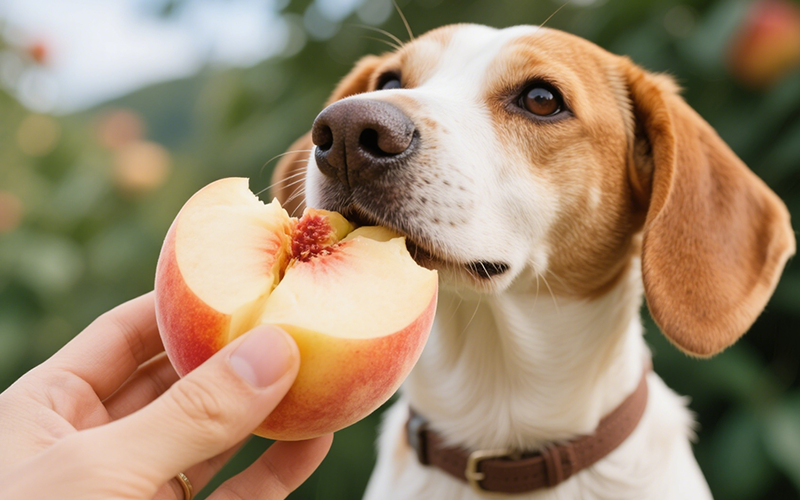
Can Dogs Eat Peaches? Vet Explains Benefits, Cyanide Risks & Safe Serving
- 16 Apr 2025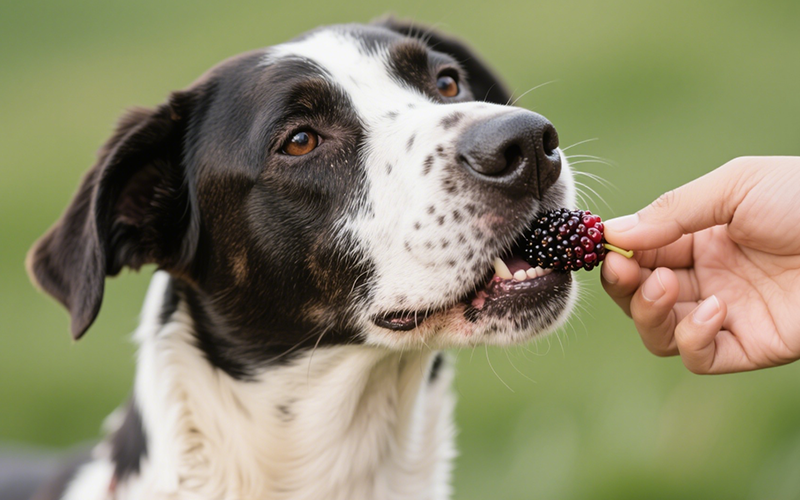
Can Dogs Eat Mulberries? Vet Explains Safety, Benefits & Potential Risks
- 16 Apr 2025
Can Dogs Eat Mozzarella? Vet Explains the Cheesy Truth (Risks & Benefits)
- 16 Apr 2025
Can Dogs Eat Mango Skin? Vet Explains Why It's a Risky Chew!
- 16 Apr 2025
Can Dogs Eat Maple Syrup? The Sugary Truth & Why Vets Advise Against It
- 16 Apr 2025
Can Dogs Eat Mac n Cheese? Vet Explains Why This Comfort Food Is Unsafe!
- 16 Apr 2025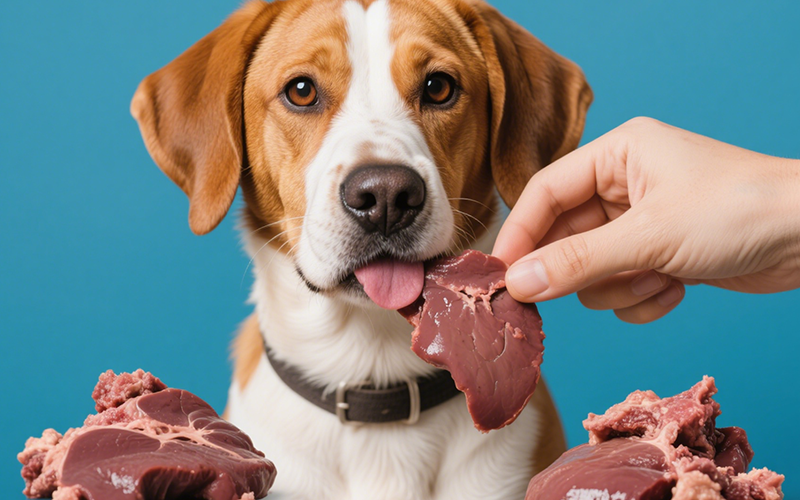
Can Dogs Eat Liver? Vet Guide to This Nutrient-Dense Organ Meat (Benefits & Risks!)
- 16 Apr 2025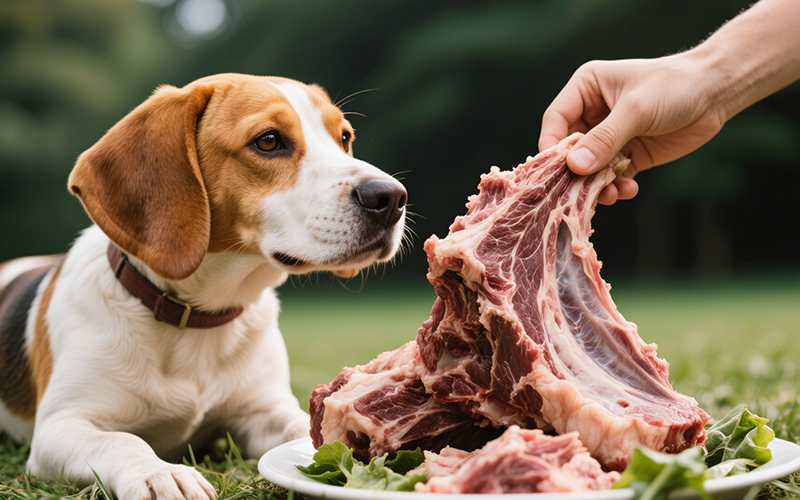
Can Dogs Eat Lamb? Vet Insights on This Nutritious Meat Option
- 16 Apr 2025
Can Dogs Eat Licorice? The Sweet Danger & Glycyrrhizin Risk Explained by Vets
- 16 Apr 2025
Can Dogs Eat Jelly? The Sweet Truth About Sugar, Xylitol & Why Vets Say No!
- 16 Apr 2025
